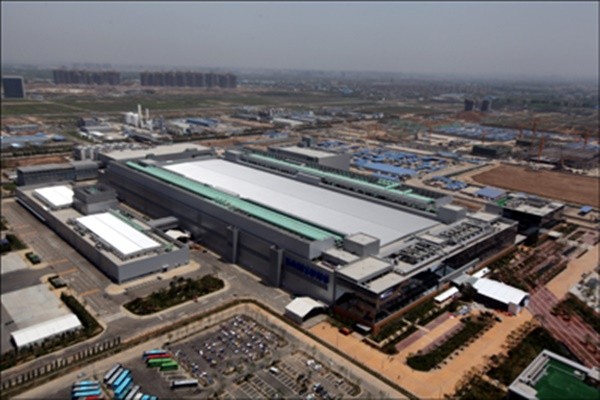Samsung is quick to widen the gap in technology with competitors. It is the first to mass produce 14-nano FinFET and 3D V-Nand Flash and is hinting about the possibility of 10-nano level D-Ram. It is ready to be the first in the world to mass produce and accelerate the process.
First product to be released is called 48-layer 3D V-Nand. Also known as V3, it is internally prepared to be mass produced.
amsung is soon to confirm new investment in 48-layer 3D V-Nand fabrication facility in Xi’an Nand Flash product line. Currently Xi’an facility has the size to produce 50,000 per month. However, it is highly expected to invest on facility that can produce extra 30,000 so that it can mass produce 80,000 essentially.
Samsung is currently mass producing 32-layer V-Nand. It is believed that testing of 48-layer V-Nand is successful since its yield was over 80%. This is why it is imminent for investments, which were not in plan late last year and early this year, to be on 48-layer V-Nand.
Samsung opened the market for V-Nand by mass producing 32-layer V-Nand in May of 2013, following up with 128gb 32-layer V-Nand with 3 bit multi-level cell in October of 2014. It will be effective for Samsung to speed up the process of mass production of 48-layer V-Nand because SKHynix, Toshiba, Micron, and SanDisk will enter the process of 3D Nand late this year and 48-layer next year.

Business circle is predicting that Samsung`s mass production of 64-layer V-Nand could be dependent on the facility investment and process. A person who is associated with the process said, “Although 64-layer V-Nand is in the process of research, everything is moving along smoothly.”
14-Nano FinFET, which boomed in Exynos AP and Foundry, will evolve into 10-Nano, and it will be mass produced in late next year. Hong Kyu Sik who serves as a director at System LSI marketing committee said, “Since 14-Nano FinFET was successful, we are expecting that 10-Nano will be mass produced rapidly.”
It is important to focus on raising the sales of 14-Nano FinFET because Samsung belives that it will contribute to the sales stride as Samsung increased the production last quarter. It is forecasted that 14-Nano FinFET will take up about 30% of production of all System LSI 12-inch.
There is a rumor that 10-Nano grade D-Ram may come out soon. Business circle has brought up a prediction that Samsung already developed 18-Nano D-Ra, and they are ready to mass produce it.
“We can’t be sure that it is 18-Nano, but we are researching on 10-Nano grade D-Ram.” Baek Ji Ho, who serves as an executive director at memory marketing department, said of the circulating rumor. “Our goal is to focus on getting 20-Nano like speed, then expansion of production and yield improvement method.”
Staff Reporter. Bae Ok Jin| withok@etnews.com